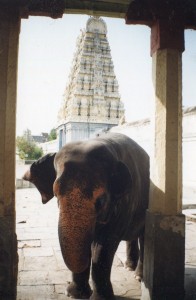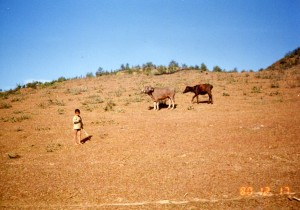Ancient Indians believed that clouds are elephants’ celestial relatives. They actually called an elephant “Cloud” (Megha) when they honored it.
According to the great Heinrich Zimmer, the elephant is a raincloud walking on earth. It’s presence attracts its winged fellow clouds. Honor it, and it’s relatives are gratified and bless the land with rain.
Africans more commonly thought that humanized deities and ancestors bring rains. But ancient Indians had their own thought patterns.
Blending ideas of clouds and the largest land animal stresses unity of opposites. Yeah, Disney’s Dumbo flies too, but Indians turned the flying elephant into an object of religious veneration that the cosmic order depends on. The unity of opposites has been stressed more in India.
And India has dramatic opposites, from the Himalayas,
To steamy lowlands.
Indians have had other creative ideas of elephants. Ganesha is a popular god with an elephant’s head and human body. His father, Shiva, cut off his human head without knowing who he was. The first creature Shiva saw was an elephant, so he joined its head to his son’s body.
Alain Danielou wrote that Ganesha unifies the biggest and the small (the human). He brings opposites together.
Danielou saw subtler meanings in Ganesha. The Sanskrit word for elephant is gaja. Ga means goal, and ja means origin. So gaja unifies the beginning of life with the goal of existence. So a person can meditate on Ganesha and become absorbed in the unity of life–he can reach samadhi.
Ganesha is worshipped as the remover of obstacles. This idea applies to your spiritual path, but in India, ideas have many levels. It also can apply to material obstacles. Thus people honor him before beginning a business venture.
Ganesha sculptures are popular today. His trunk is bent, and this represents going around blockages. But it ends in a candy dish, from which he feeds his raincloud-sized stomach. Metaphysical or physical, he represents abundance for all mentalities.




Comments on this entry are closed.